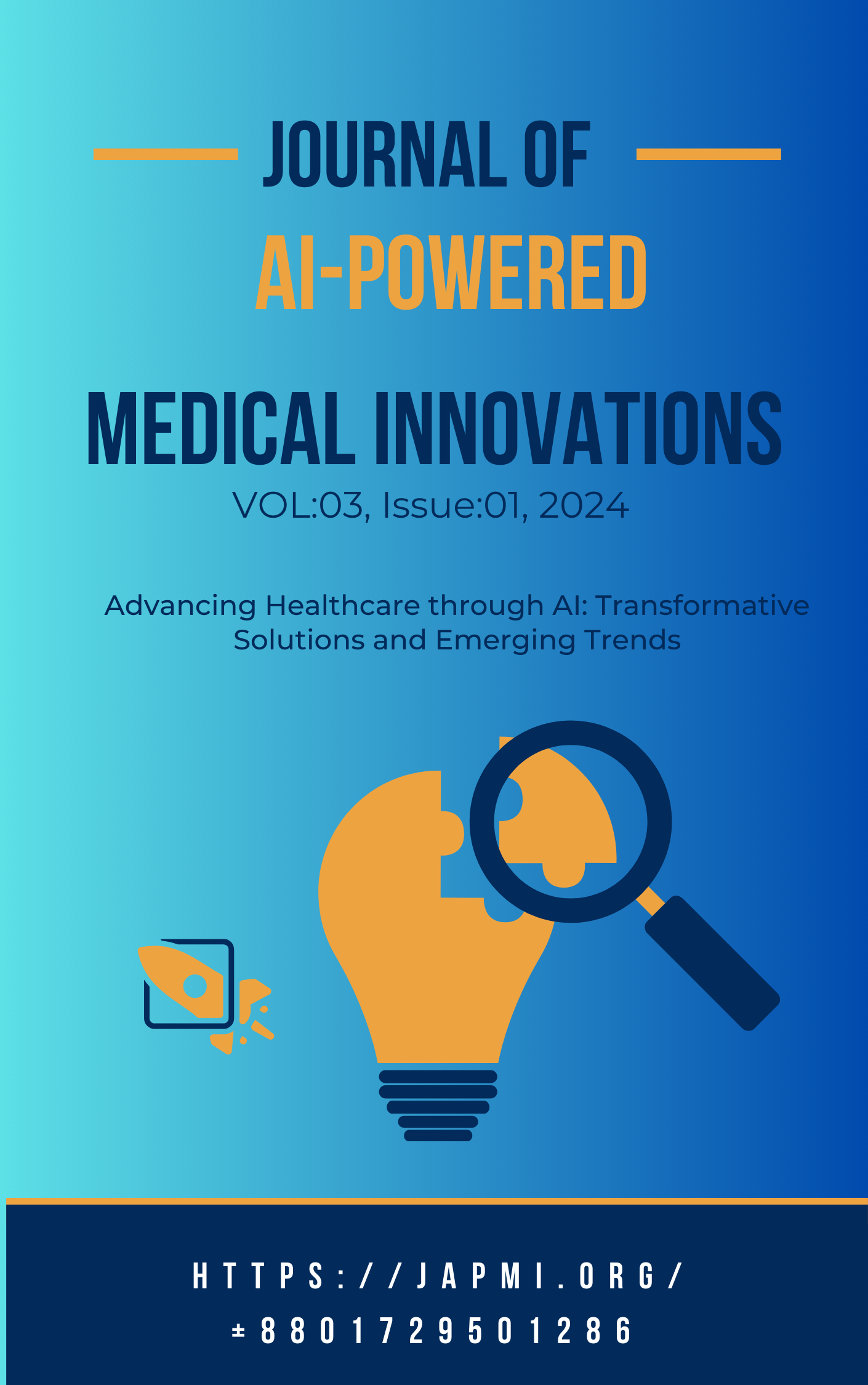Real-Time Data Integration for Emergency Response in Healthcare Systems
DOI:
https://doi.org/10.60087/Japmi.Vol.03.Issue.01.ID.002Keywords:
Real-time data integration, emergency response, healthcare systems, data interoperability, AI-driven analytics, cloud computing, patient outcomes, healthcare innovationAbstract
The demand for swift and efficient emergency response in healthcare has intensified with the rise of global health crises and increasingly complex healthcare systems. Real-time data integration plays a crucial role in enabling healthcare providers to respond effectively to emergencies by providing a comprehensive, updated view of patient data, resource availability, and situational developments. This paper explores a real-time data integration framework designed specifically for emergency response within healthcare systems, focusing on how integrated data can enhance decision-making, resource allocation, and patient outcomes. Leveraging cloud computing, data streaming, and machine learning, the proposed system aims to bridge the gap between disparate data sources, creating a unified platform that provides real-time insights for healthcare providers and emergency response teams.
The framework presented in this paper aggregates data from various sources, including electronic health records (EHR), hospital resource management systems, telemedicine platforms, and emergency response databases. Through data integration, healthcare providers gain immediate access to critical information, such as patient histories, lab results, medication records, and availability of beds, medical staff, and essential supplies. Additionally, integrating data from real-time sources, like wearable health devices and mobile applications, allows emergency teams to monitor vital signs and early warning indicators remotely, enhancing their ability to intervene promptly in critical situations. This system’s emphasis on real-time data integration not only facilitates seamless information sharing but also supports predictive analytics, which enables healthcare providers to anticipate and respond to future emergencies proactively.
The framework utilizes advanced cloud-based technologies, such as Apache Kafka and Spark Streaming, to handle high-velocity data from multiple sources, ensuring that integrated data is processed and available for real-time analytics. This architecture supports data ingestion, transformation, and storage in a scalable and resilient manner, making it suitable for both large-scale healthcare institutions and regional health networks. Additionally, the system employs machine learning algorithms to perform predictive analytics, identifying trends in patient data that signal potential emergencies, such as sepsis or cardiac events. By continuously analyzing integrated data, the system helps to reduce response times, optimize resource allocation, and enhance patient outcomes.
In a case study involving a major urban hospital network, the proposed data integration framework demonstrated significant improvements in emergency response efficiency. The integrated platform enabled healthcare providers to view patient data and resource status in real-time, reducing time spent searching for critical information across systems. Additionally, predictive models identified early signs of deteriorating patient conditions, allowing emergency teams to intervene sooner. This resulted in a 20% reduction in average emergency response time and improved patient stabilization rates. Furthermore, the integration of data from telemedicine platforms facilitated remote triage, enabling healthcare providers to assess patients’ needs before arrival at the hospital. This capability proved particularly valuable during periods of high demand, such as during infectious disease outbreaks, when healthcare resources are stretched thin.
A key challenge addressed in the design of this framework was ensuring data privacy and security, especially given the sensitive nature of healthcare information. To address this, the system incorporates robust security protocols, including data encryption, role-based access control, and compliance with regulatory standards like HIPAA (Health Insurance Portability and Accountability Act). Data anonymization techniques are also employed when integrating information from public health databases, allowing for valuable data insights without compromising patient privacy. In addition to security, maintaining data quality and consistency across multiple sources is vital for accurate real-time analytics. The framework includes data validation and normalization processes to ensure that data from various sources is accurate and compatible, thus enhancing the reliability of insights generated by the system.
The proposed real-time data integration framework holds significant implications for the future of emergency response in healthcare systems. By breaking down information silos and enabling seamless data exchange, healthcare providers are better equipped to handle both everyday emergencies and large-scale health crises. This system also lays the groundwork for more advanced applications, such as AI-driven decision support systems and automated resource management, which could further enhance emergency response capabilities. As healthcare continues to evolve in response to global challenges, the role of real-time data integration in emergency response will become increasingly essential.
In conclusion, real-time data integration represents a transformative approach for emergency response in healthcare systems, offering a unified platform that improves access to critical information, supports proactive interventions, and enhances patient outcomes. By utilizing cloud computing, real-time streaming, and predictive analytics, the proposed framework addresses key challenges in healthcare emergency response, including information fragmentation, resource constraints, and the need for rapid decision-making. Future research and development in this area should focus on expanding the framework’s capabilities through AI and machine learning advancements, ensuring scalability to meet the needs of diverse healthcare environments, and exploring the integration of emerging data sources, such as genomic and environmental data, to further enhance emergency response in healthcare.
Downloads
Published
Issue
Section
License
Copyright (c) 2024 Journal of AI-Powered Medical Innovations and Authors

This work is licensed under a Creative Commons Attribution 4.0 International License.

